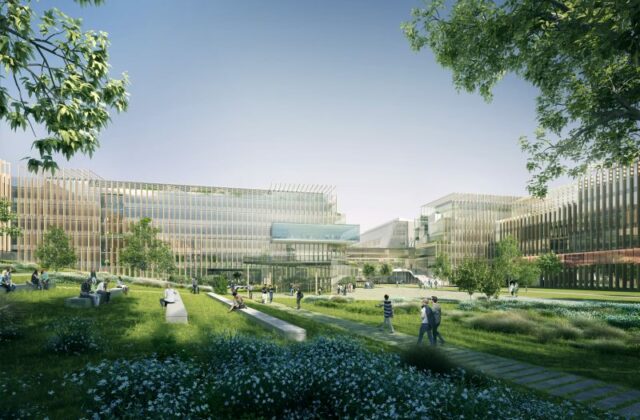Teaching & research, 20th century heritage
Contrat de partenariat pour la réalisation de l’opération de réhabilitation du bâtiment Copernic
Marne-la-Vallée, France
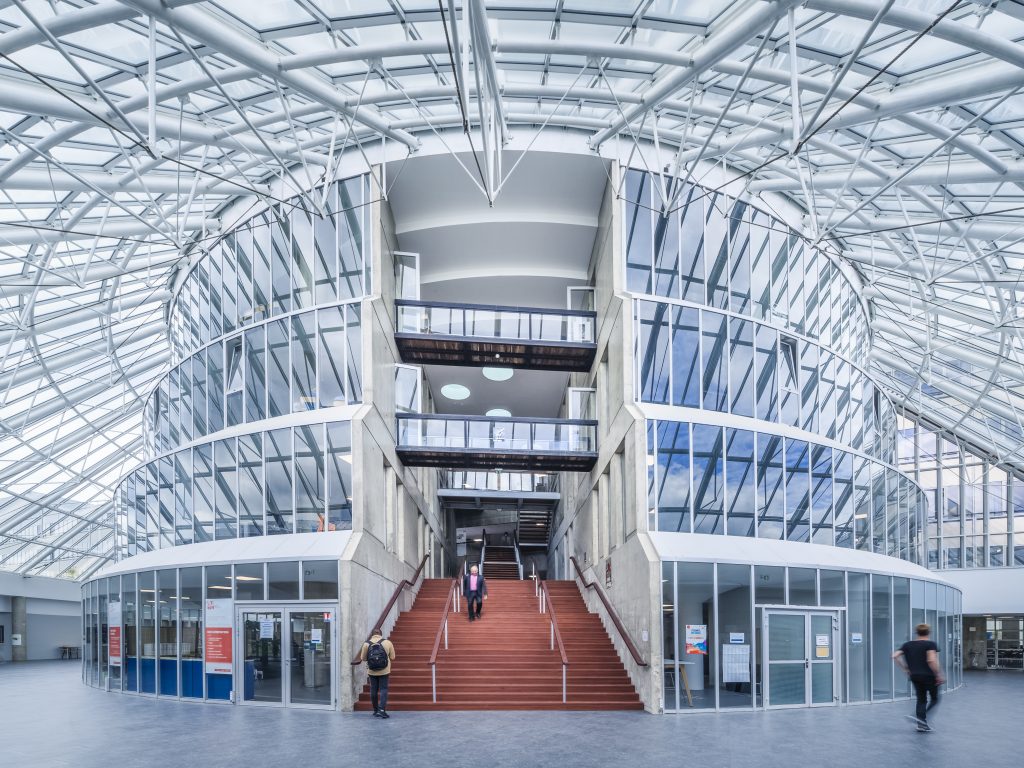
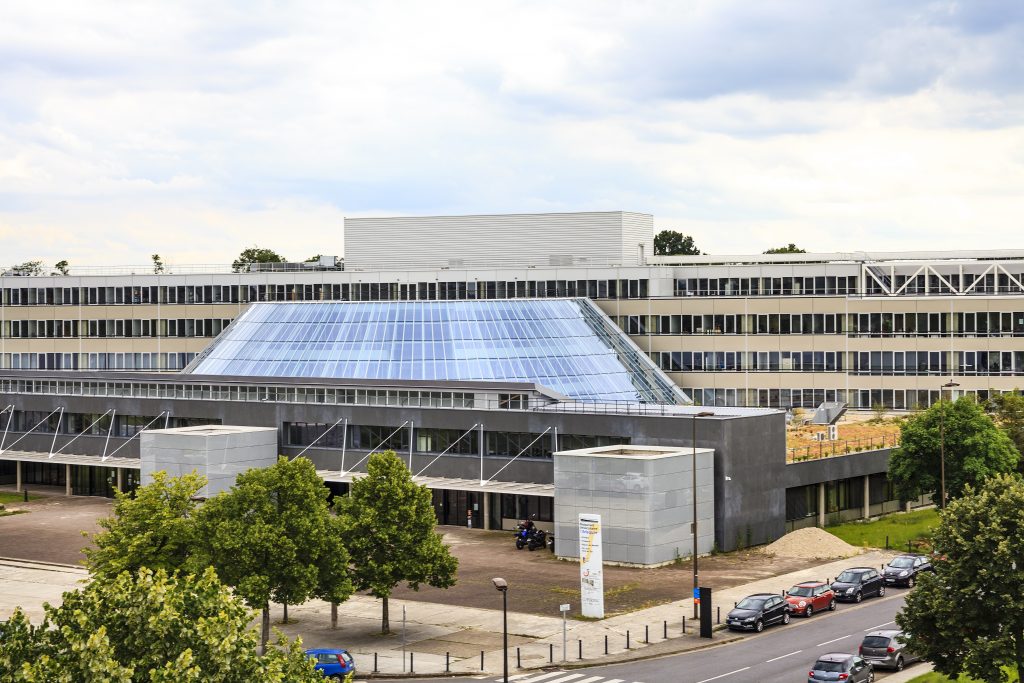
The Copernic Building, designed by Bertrand Bonnier in 1988, has been transformed into a contemporary building entirely dedicated to education and research. Respect for the original architecture has been the driving force behind the considerate and iconic modernization of what is a major scientific hub in the French academic landscape.
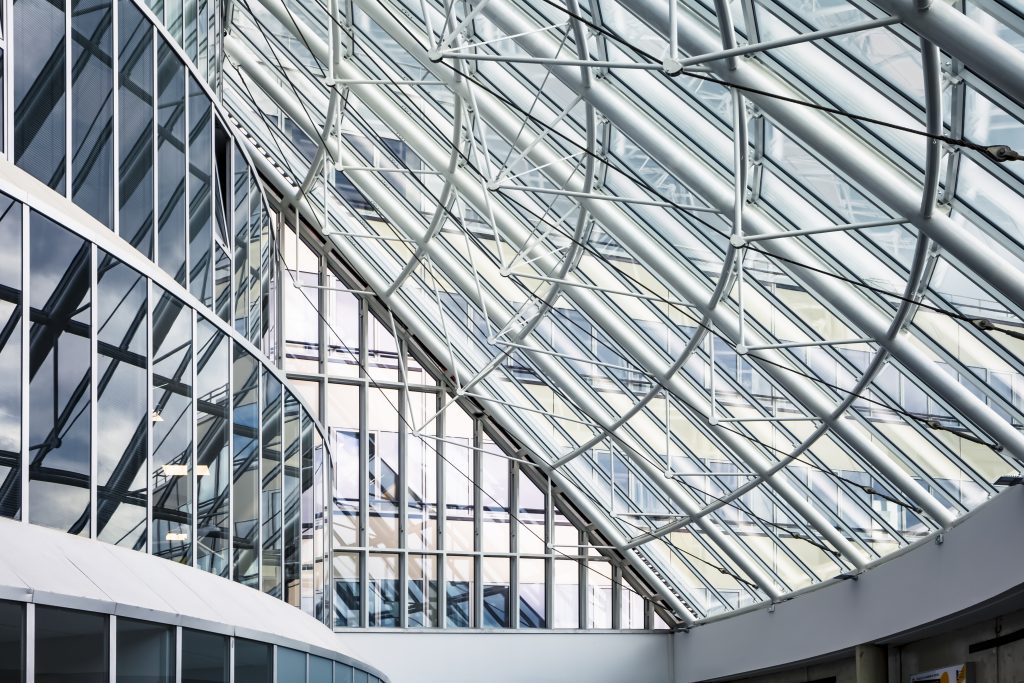
The Copernic building is part of a university campus located in the Mixed Development Zone of Haute Maison south-west of the town of Champs-sur-Marne. The original morphology is broken down into two strong forms: a main access platform aligned with Boulevard Descartes that supports a long row of low-rise buildings located diagonally on the parcel of land. The slope of this location frees up to the south a large area of landscaping and parking spaces allocated to visitors. Different varieties of plants and the existing tall-trunked trees have been conserved and supplemented by the planting of lime trees along the boundaries of the site, creating a pedestrian walkway from Rue Alfred Nobel to the building.
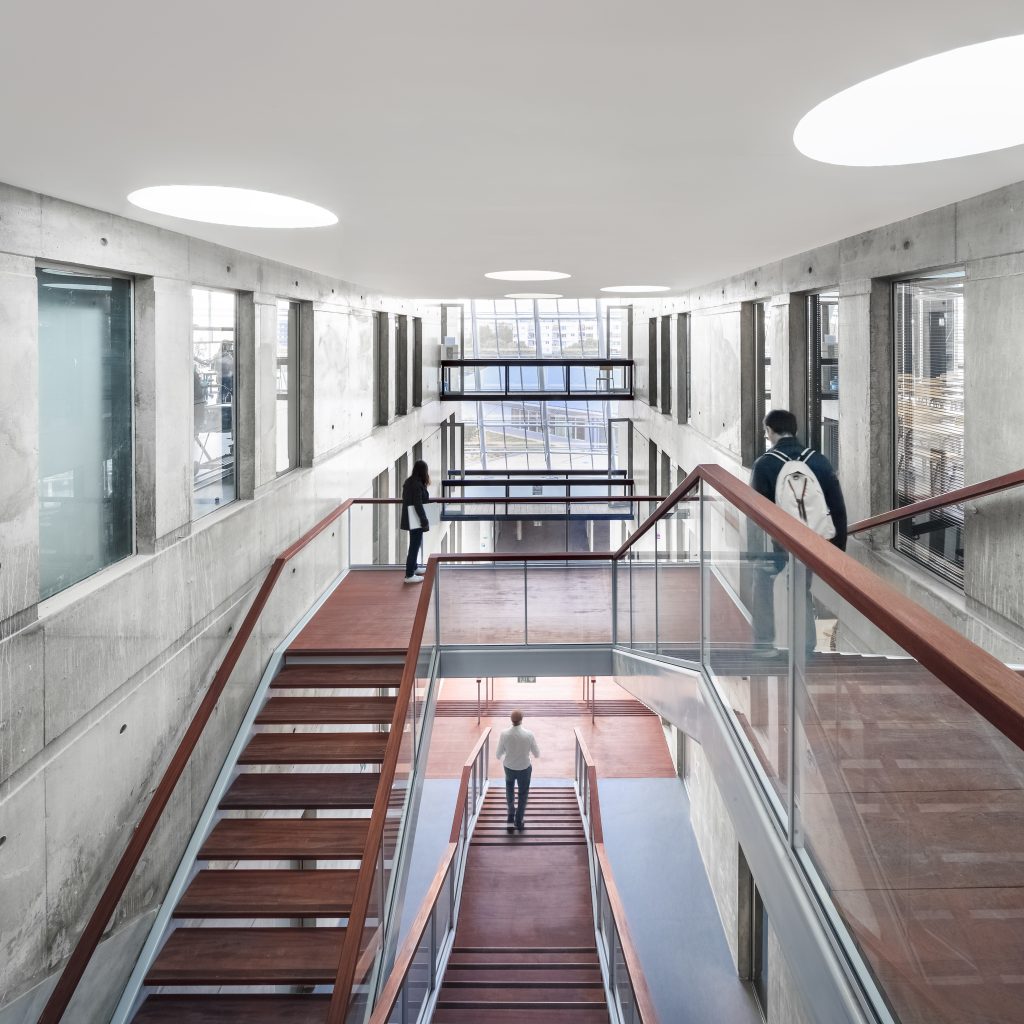
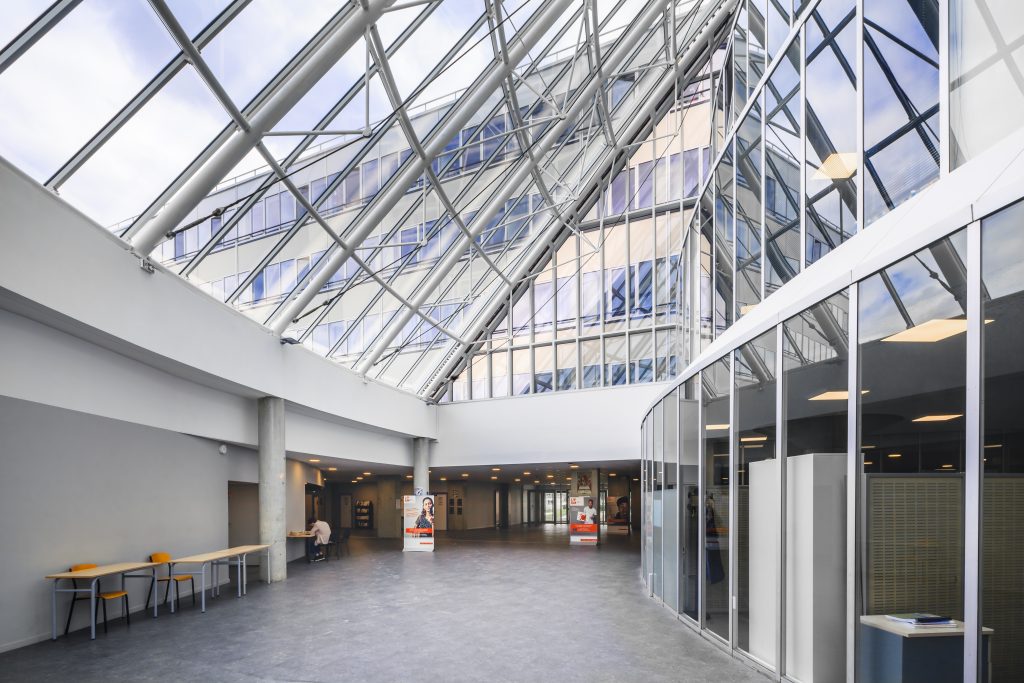
The scheme aims to strengthen the identity of the building as an outstanding educational centre and improve its technical and thermal performance. The original architecture including the platform (access and reception), the five cubic bastions (offices), the main body of the campus, the pontoons (circulation areas) and the volcano (central glass roof) has been preserved and upgraded. The access hall is organised around a series of circular, glazed office spaces in the centre, and it is covered with a large glass roof. As a result, the interior spaces are very bright and their large proportions mean that meetings and break times are very pleasant for users. The ceramic tiles on the platform have been replaced by a composite mineral material. In the low-rise buildings, the new panels made of anodised aluminium are “champagne” coloured, constitutive of the original design. The tiles on the five cubic bastions are glass screen printed with a reflective white printing that respects the monumental character of the remarkable signs for which they were designed. The shell, which was obsolete from a thermal point of view, has been replaced by a new structure that reduces consumption and achieves optimal energy performance. Following the recommendations of the original architect, the lay-out and organisation of the glass parts have been designed to ensure the building consumes less than 27 kWh / m², and have economized 400,000 €. Since the rehabilitation and extension took place on a busy site, a project with a low environmental impact made it possible to limit the disturbance caused to users and the neighbouring infrastructure.
- Customer:Université Paris Est Marne-la-Vallée
- Team:architecturestudio, Demathieu Bard (Constructeur mandataire) Vanguard, Betom Ingénierie, Oasiis Agence France Île-de-France, Tess, Altia, Astuce Beton, Befsia Champs-sur-Marne, France
- Program:Enseignement supérieur, Réhabilitation
- Year:2016
- Surface:39 200 m²
- Cost:33 000 000 €
- Status:Livré en 2019
Similar programs

Créteil Cathedral extension, Créteil, France

Music Conservatory, Montpellier, France
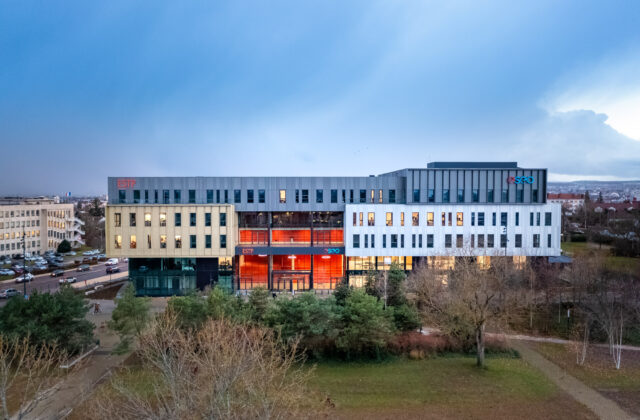
ESTP ESEO Metropolitan Campus, Dijon, France
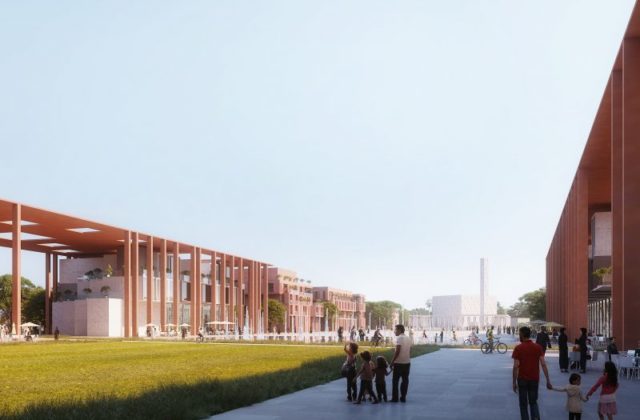
Benguerir University campus, Benguerir, Morocco

International school complex, Marseille, France
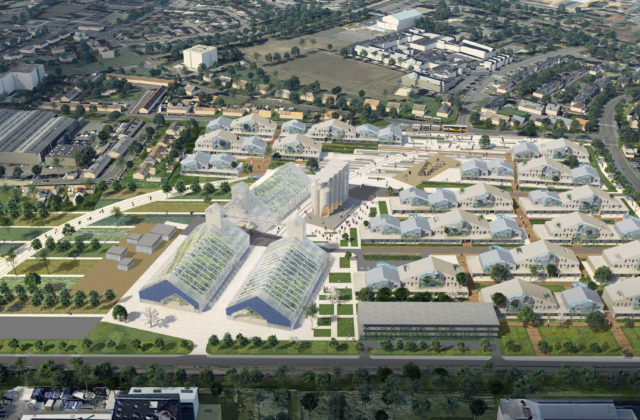
Olis agricultural neighbourhood, Lucé, France
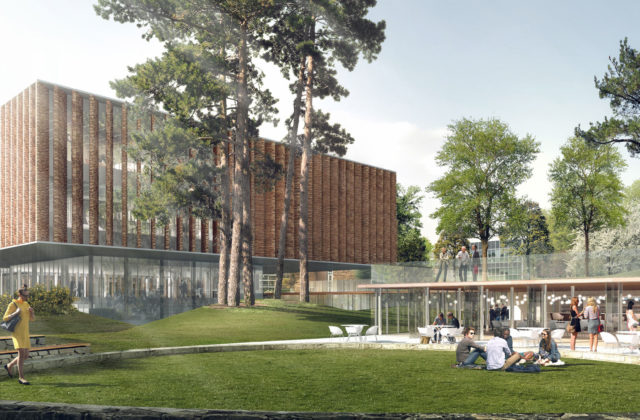
Campus de l’INSEAD, Fontainebleau, France

Bâtiment universitaire sur le campus de l’ESTP, Cachan, France
